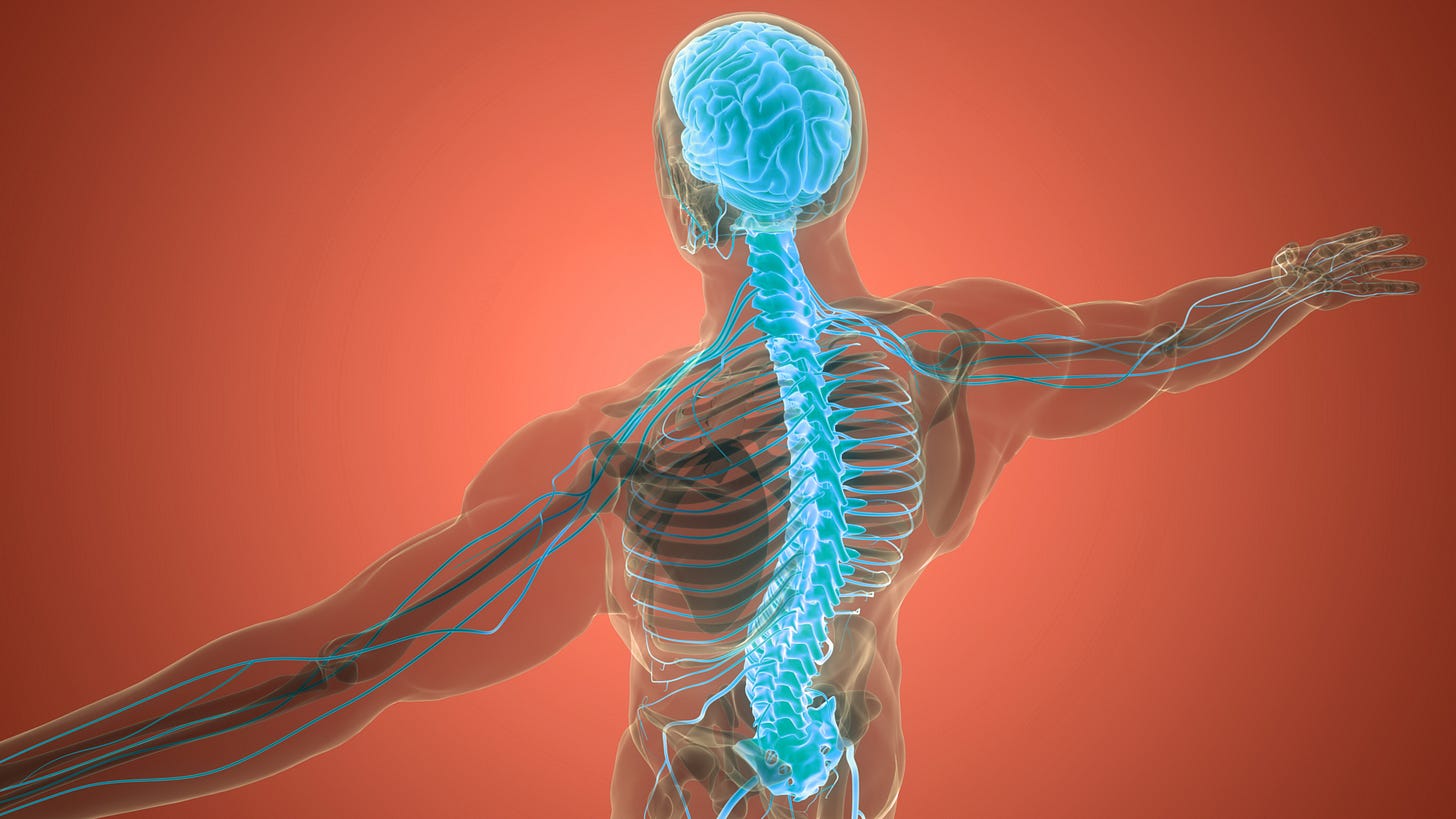What is the sympathetic-adrenal-medullary (SAM) system, and how does Qigong effect it?
The sympathetic-adrenal-medullary (SAM) system, also known as the sympathetic-adrenal system, is another important component of the body's stress response. It works in parallel with the HPA axis to help the body respond rapidly to acute stressors or threats.
The SAM system involves the sympathetic nervous system, the adrenal medulla, and the release of adrenaline (epinephrine) and noradrenaline (norepinephrine).
Here's how the SAM system works:
Sympathetic Nervous System: The sympathetic nervous system is a part of the autonomic nervous system, responsible for the body's fight-or-flight response. When the brain perceives a threat or stressor, it triggers the sympathetic nervous system to activate.
Activation of Sympathetic Nerves: The sympathetic nerves extend from the spinal cord to various organs and tissues throughout the body. When activated, they release the neurotransmitter noradrenaline (norepinephrine) into the bloodstream.
Adrenal Medulla: The adrenal medulla is the inner part of the adrenal glands, located on top of the kidneys. When the sympathetic nervous system is activated, it signals the adrenal medulla to release hormones.
Release of Adrenaline and Noradrenaline: In response to the signals from the sympathetic nerves, the adrenal medulla releases the hormones adrenaline (epinephrine) and noradrenaline (norepinephrine) directly into the bloodstream.
Effects of Adrenaline and Noradrenaline: Once released into the bloodstream, adrenaline and noradrenaline quickly spread throughout the body. These hormones have various effects that help the body respond to stress:
Increased heart rate: Adrenaline and noradrenaline stimulate the heart to beat faster, increasing blood flow to supply more oxygen to muscles and vital organs.
Dilation of airways: These hormones relax the muscles around the airways, allowing for increased airflow and better oxygen intake.
Increased blood sugar: Adrenaline and noradrenaline promote the release of glucose from the liver into the bloodstream, providing a rapid source of energy for the body's increased activity.
Pupil dilation: The hormones cause the pupils of the eyes to dilate, improving vision and alertness.
Suppression of non-essential functions: Adrenaline and noradrenaline reduce activity in non-essential functions like digestion and reproductive processes to prioritize immediate survival responses.
The SAM system is responsible for the "fight or flight" response, which prepares the body to deal with acute stressors or dangers. Once the threat is gone, the SAM system activity subsides, and the body returns to its baseline state.
Both the HPA axis and the SAM system are vital in orchestrating the body's response to stress, ensuring its ability to cope with challenges and return to a balanced state once the threat has passed.
Qigong is generally considered a mind-body practice that incorporates physical movements, breathing techniques, and meditation to promote relaxation, balance, and overall well-being. Its potential impact on the SAM system can be inferred based on the known effects of Qigong on the nervous system and stress response.
The sympathetic-adrenal-medullary (SAM) system is one part of the body's stress response system. When we encounter stress or a perceived threat, the sympathetic nervous system activates the release of stress hormones, such as adrenaline and noradrenaline, from the adrenal medulla (the inner part of the adrenal glands). This leads to the well-known "fight-or-flight" response, preparing the body to respond to the stressor.
Qigong practices, when performed regularly and mindfully, may influence the SAM system through various mechanisms:
Relaxation response: Qigong's emphasis on slow, controlled movements and deep breathing can activate the parasympathetic nervous system, which is responsible for the "rest-and-digest" response. This counters the effects of the sympathetic nervous system and helps reduce stress hormone levels.
Cortisol regulation: Studies on other mind-body practices, such as meditation and yoga, have shown that they can reduce cortisol levels. As Qigong shares similarities with these practices, it's possible that it might have a similar impact on cortisol regulation.
Improved autonomic balance: Qigong may promote balance between the sympathetic and parasympathetic nervous systems, resulting in improved autonomic nervous system function and better stress response.
Reduction of perceived stress: Regular Qigong practice may lead to a decrease in perceived stress levels, which could indirectly influence the SAM system by reducing the frequency and intensity of stress responses.
Enhanced mind-body connection: Qigong encourages practitioners to focus their minds on the movements and their breath, fostering a deeper mind-body connection. This heightened awareness may allow individuals to become more adept at managing their stress responses.
Despite the potential positive effects of Qigong on the sympathetic-adrenal-medullary system, it's essential to recognize that research on this specific aspect is still limited. More scientific studies are needed to better understand the mechanisms through which Qigong impacts the stress response and the SAM system.
For more information on how practices like Qigong and meditation influence mental and physical health, please head over to www.jadedragon.org.
If you found this post informative, we kindly request you to like, comment, subscribe, and share it with your friends and family. Spreading the word will help us reach more people, offering them the potential for improved health, strength, and peace of mind.





